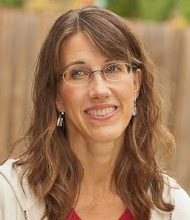On Monday, the General Synod of the Church of England decided to allow the consecration of women bishops, and struck down all amendments by traditionalists which would have allowed them alternative oversight by their own bishops.
This move takes away the alternative options granted and promised to traditionalists when the ordination of women as priests was first allowed, and is likely to create a major schism in the historic Church of England.
It's also a sad commentary on liberalism, it seems to me. As Fr. David Ould laments:
The talk of being inclusive and generous is just that. Talk. In reality there is no desire to be anything like inclusive and generous.
The lie of the broad church is demolished once and for all. I am now outside the church on a matter that is, according to the discussions of the church, still debatable and where people on both sides are understood to hold their position in good conscience. And that is a ridiculous state of affairs. Our "broad church" has become even narrower. It strikes me that this is in no large part due to an absolute breakdown in trust - I simply do not trust the liberals to play fair. They have demonstrated time and time again that they will not.
If anyone wonders what the objections are to women as priests or bishops, no one explains it better than C.S. Lewis in his article, "Priestesses in the Church?" I was so happy to finally read this short essay for myself (thanks, Barbara G. for bringing it to my attention!).
Please, read the whole thing if you're interested in this topic. Otherwise, the crux of his argument is:
But Christians think that God Himself has taught us how to speak of Him. To say that it does not matter is to say either that all the masculine imagery is not inspired, is merely human in origin, or else that, though inspired, it is quite arbitrary and unessential. And this is surely intolerable: or, if tolerable, it is an argument not in favour of Christian priestesses but against Christianity. It is also surely based on a shallow view of imagery. Without drawing upon religion, we know from our poetical experience that image and apprehension cleave closer together than common sense is here prepared to admit; that a child who has been taught to pray to a Mother in Heaven would have a religious life radically different from that of a Christian child. And as image and apprehension are in an organic unity, so, for a Christian, are human body and human soul.
The innovators are really implying that sex is something superficial, irrelevant to the spiritual life. To say that men and women are equally eligible for a certain profession is to say that for the purposes of that profession their sex is irrelevant. We are, within that context, treating both as neuters.
...unless "equal" means "interchangeable", equality makes nothing for the priesthood of women. And the kind of equality which implies that the equals are interchangeable (like counters or identical machines) is, among humans, a legal fiction. It may be a useful legal fiction. But in church we turn our back on fictions. One of the ends for which sex was created was to symbolize to us the hidden things of God. One of the functions of human marriage is to express the nature of the union between Christ and the Church. We have no authority to take the living and semitive figures which God has painted on the canvas of our nature and shift them about as if they were mere geometrical figures.
To put it another way, Lewis borrows from Pride and Prejudice:
"I should like balls infinitely better," said Caroline Bingley, "if they were carried on in a different manner ... It would surely be much more rational if conversation instead of dancing made the order of the day."
"Much more rational, I dare say," replied her brother, "but it would not be near so much like a Ball."
Exactly.
Wednesday, July 09, 2008
Subscribe to:
Post Comments (Atom)

No comments:
Post a Comment